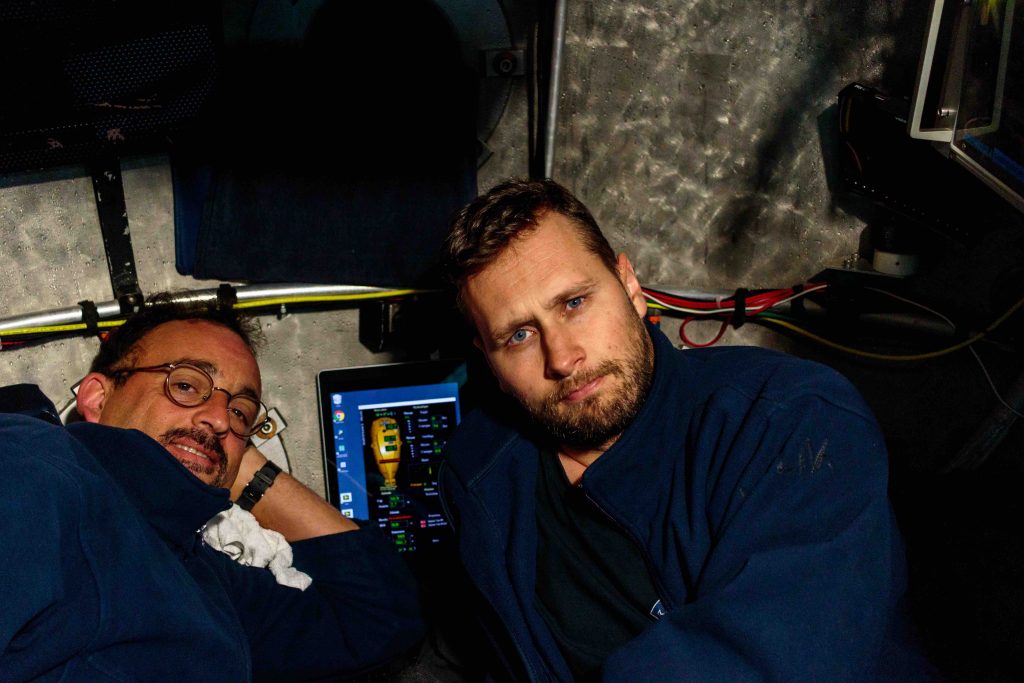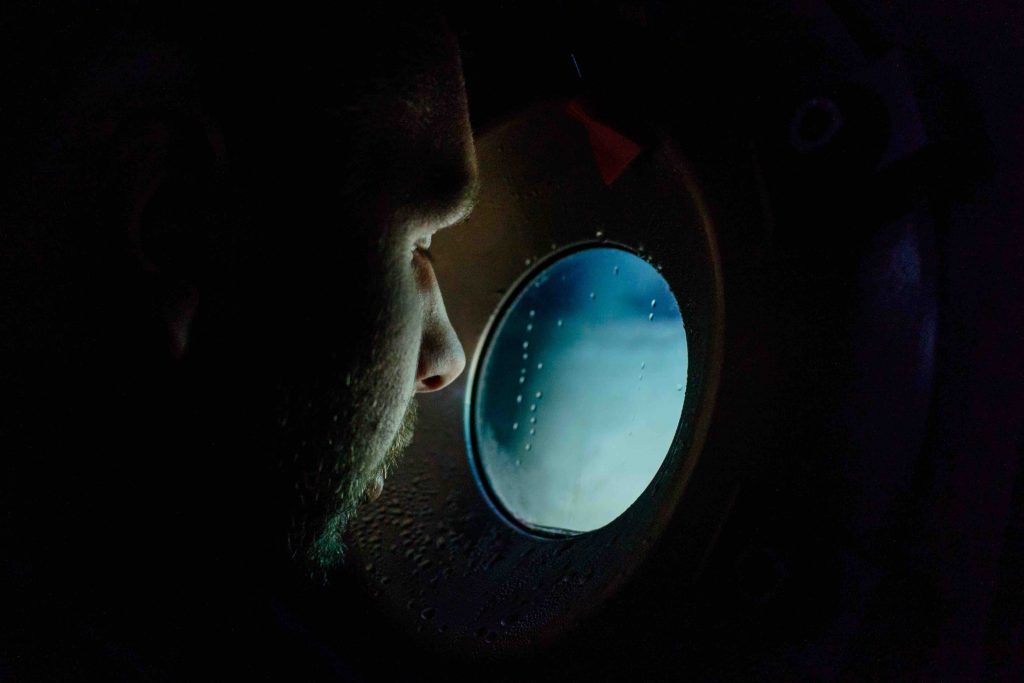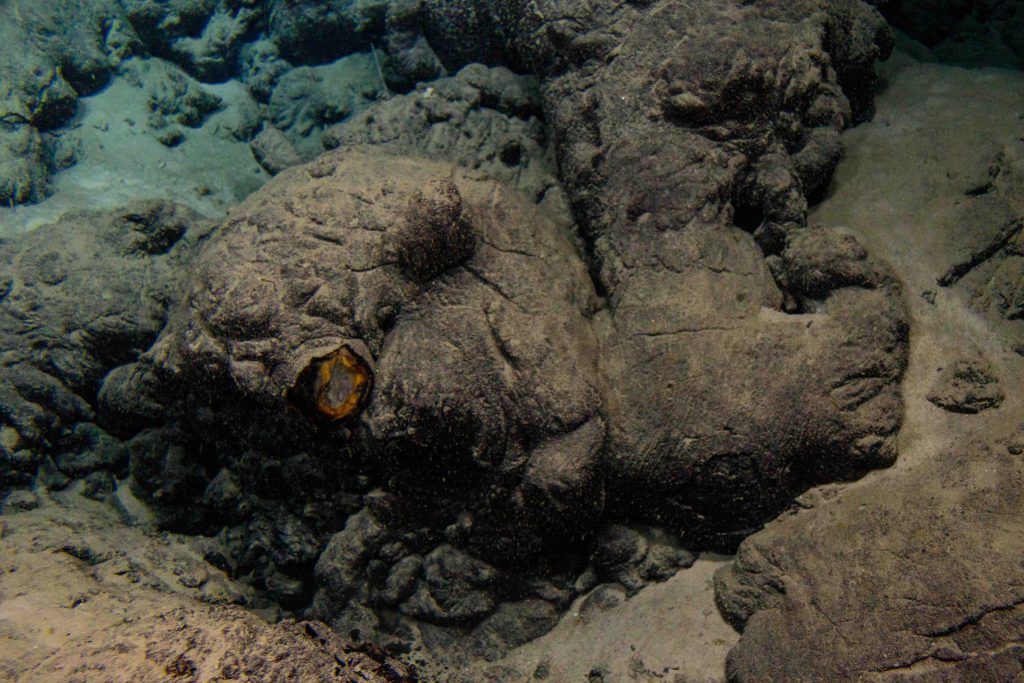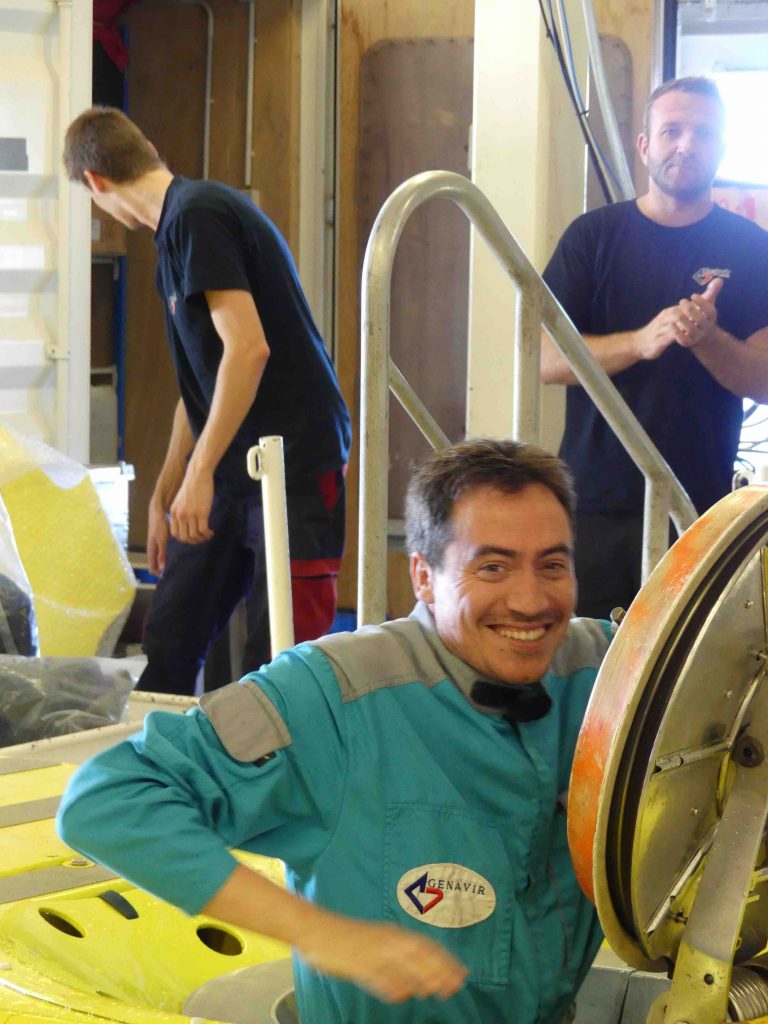The dive was taking place on the side of the detachment faults we have been studying for the past days. Based on observations collected by the multibeam of the Pourquoi pas?, one of the graben valley cutting through the main detachment surface has a very reflective seafloor, interpreted as volcanic.
The exploration dive started at 4100m below the sea surface. We landed on top of a very sedimented seafloor, not much to see at first. After a hundred meters, the landscape changed dramatically as we arrived in front of a lava flow. As it is common in underwater volcanic terrane, the lava was frozen with the shape of tubular structures, called pillow lava. During my career, I spent hours looking at similar volcanic structures on screens, relaying the cameras of ROVs (Remotely Operated Vehicle), seeing those with my own eyes felt like using prescription glasses for the first time… like discovering life in HD. Breathtaking.

Pilot (X. Placaud) and co-pilot (W. Kulick) of this dive inside the Nautile. P. C. Hamelin © Ifremer 
The co-pilot concentrated during a sampling operation. P. C. Hamelin. © Ifremer
This first volcanic event is probably relatively recent as it is barely covered with any sediments (less than a 10 000 years old). After sampling those pillows, we continued exploring around and found some fractures opening in the more sedimented terrain. In this little crack, the sediments uncover other pillow lava, probably marking a more ancient volcanic event (>50 ky).
After those observations at the deepest part of the profile, we started climbing on a slope made of more volcanic material. As we started our climb, the first outcrop was made of a debris flow of pillow fragments. Along the way, we sampled regularly and we saw many very elongated pillows, typical of what is found when a volcanic eruption takes place on a steep slope. Those are giving us a good idea of where the lava was coming from and what was the ground orientation during the eruption.

Pillow lava showing the trace where a sample was taken. © SMARTIES cruise 
Returning to the surface. P. G. Ceuleneer. © Ifremer
Finally, reaching the upper part of our profile, we found some clear normal faults. If they should be considered as relatively modest faults compared to other faults seen around, the 25 m escarpment is truly impressive from the submarine perspective. When passing the edge of the fault, it feels like plunging from an underwater cliff. The last stops we did before coming back to the surface was on the summits of little (50-80m) volcanic cones, which are the main feature of the landscape at the top of this section.
By C. Hamelin